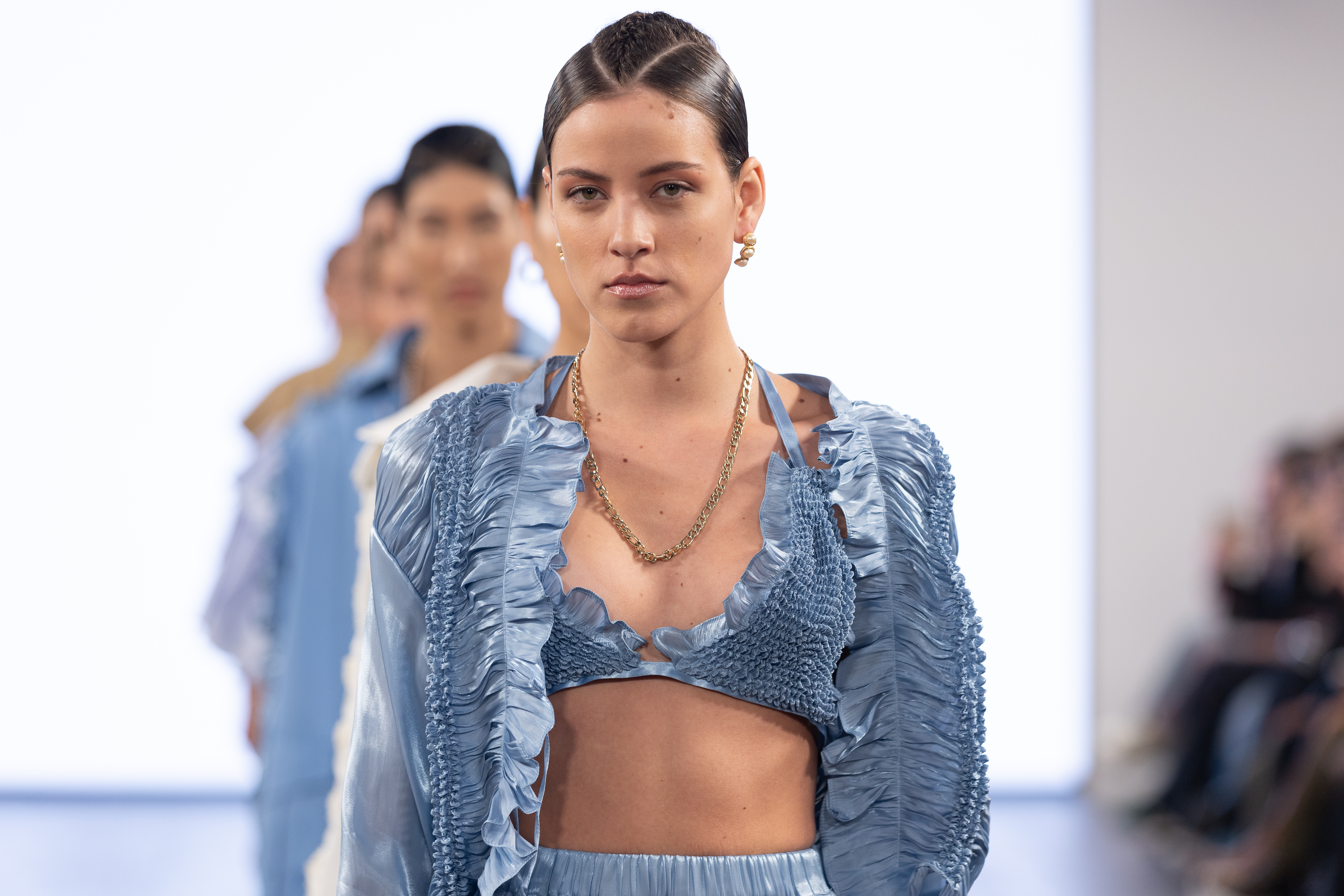Bringing their own rhythm to London Fashion Week.
Words by Leigh Maynard & Brian James, Photo by Chris Yates
One of the highlights of London Fashion Week SS24 was the on-schedule debut of designer Jun Nakamura’s semi-eponymous label JU-NNA, whose latest collection showed in front of a packed East London audience comprising industry insiders, celebrities and in-the-know fashion fans. The air of expectation and anticipation outside the venue was palpable, and there was a tangible sense that his previous off-schedule show at the same venue had laid the groundwork for a word-of-mouth buzz which saw massive queues snaking down a Shoreditch Street.
It was a triumphant return to the East End for the designer who studied at the Istituto Marangoni a few short streets away and who graduated with an M.A in womenswear after having previously worked in Japan, where he made kimonos and worked in the Tokyo fashion industry. This marriage of East meets West imbues his work with the street-style edge of East London and the sacred sensibilities of his homeland. It’s a unique fusion of cultural influences underpinned by an environmental empathy and a commitment to preserving the ancient Japanese art of Shibori, a manual tie-dyeing technique that produces a series of different patterns on fabric.
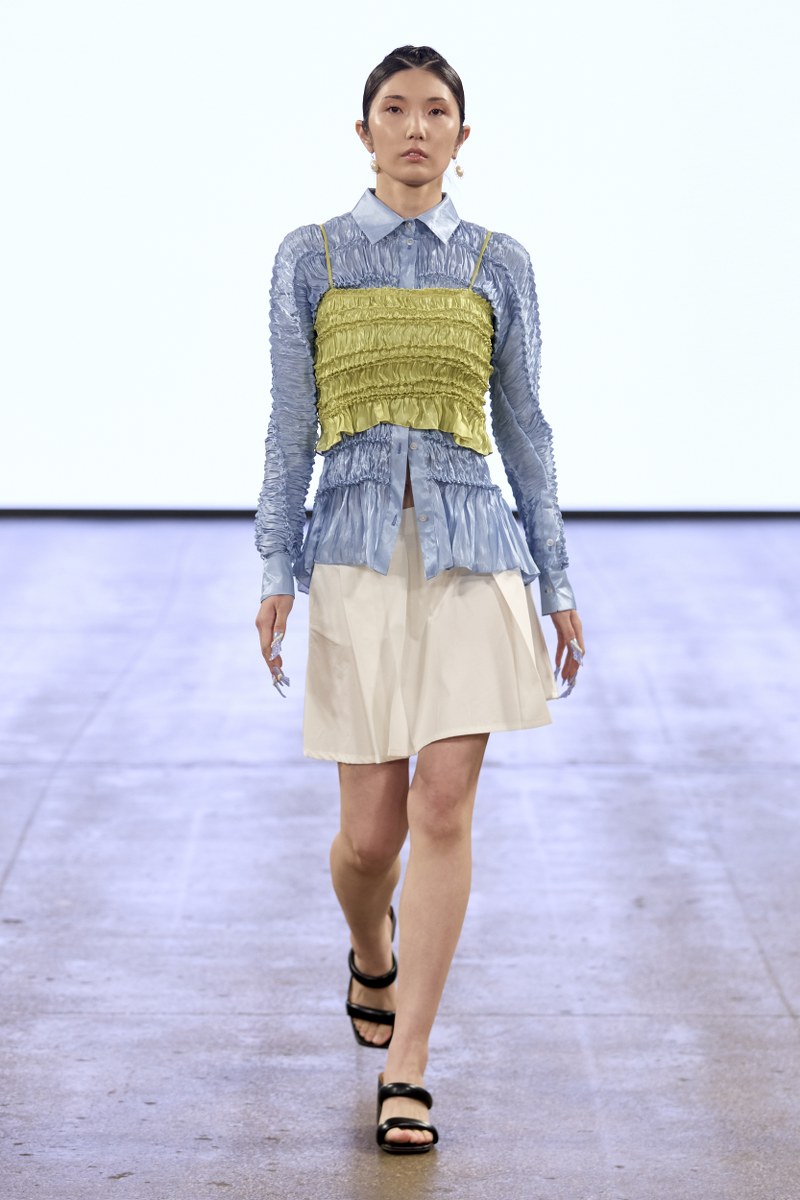
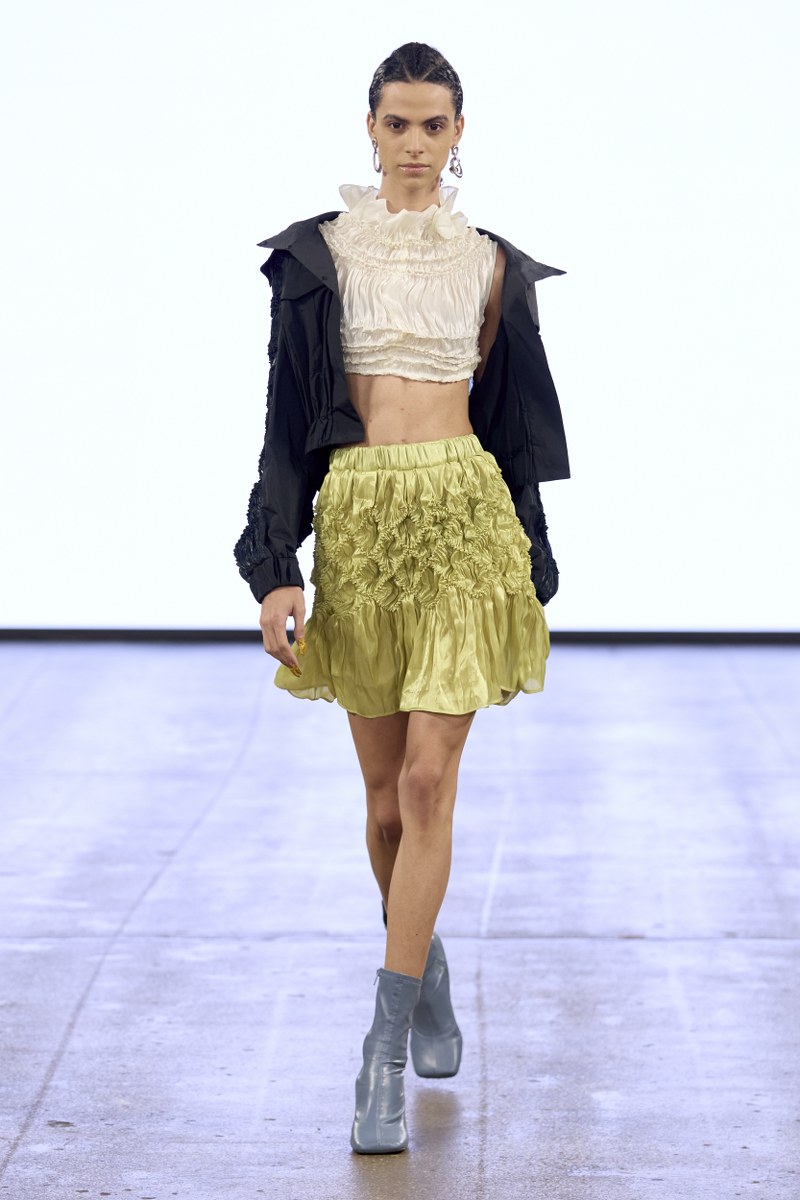
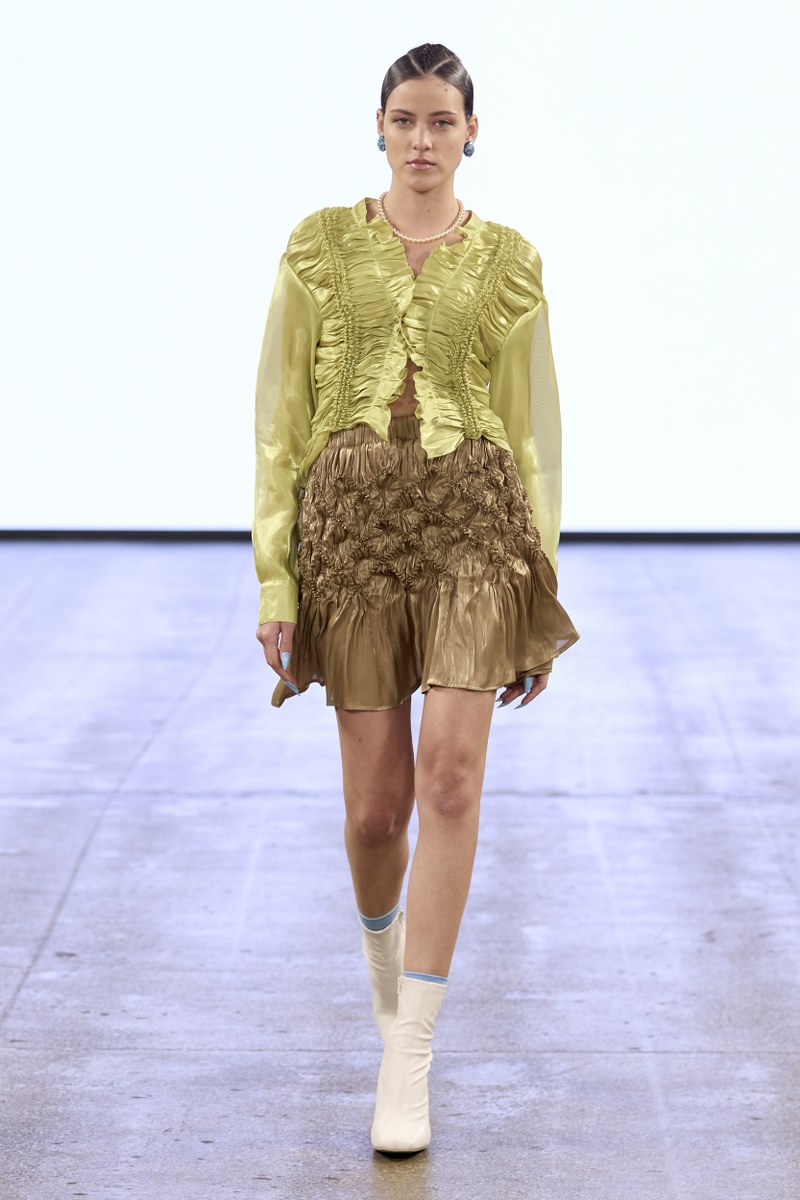
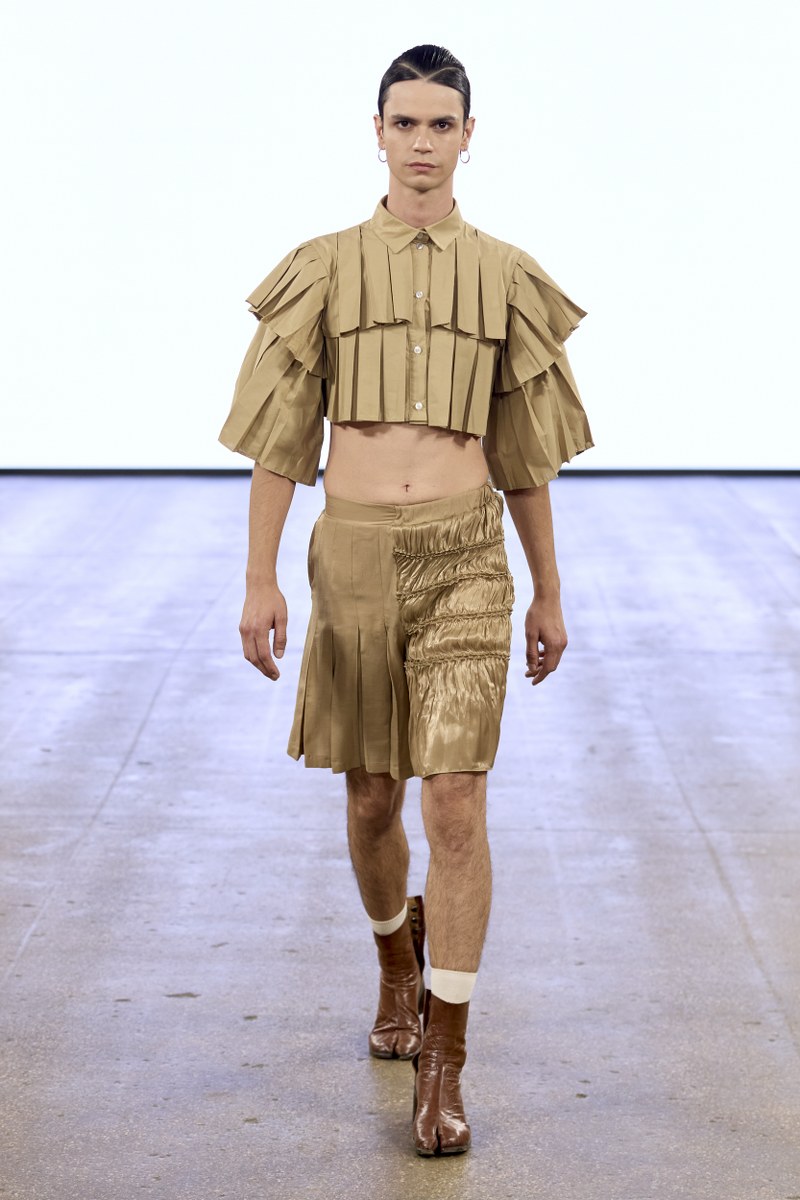
Catching up with Jun after the show, we asked him what had initially inspired him to become a designer. He told us, “While I was working in the Kimono industry, it spontaneously came out. As a fashion lover, by working with artisans making Kimonos, I started to think that I would like to be a designer using those unique techniques”.
Reading the show notes, it was apparent that this season, he drew inspiration from a sculpture by the artist Maria Bartuszova entitled “Alternating Rhythm”. Jun explained, “Every season, I take inspiration from art pieces, sometimes their colours and sometimes their shapes. This season, while walking in the Tate Modern, the sculpture caught my attention. It is an object made of metal board with half-cone-like shapes attached, and to me, it looked like it was following a certain curved line. There is perfect harmony in the flat board, 3D cone shapes, and how it is placed. It inspired me to apply this beautiful line to the Shibori collection”. It’s also a collection that shows a designer evolving, one who has elevated the brand’s signature attributes of fierce femininity and unsurpassed luxury to new levels. On this point, he expanded “There has been a conflict in my mind about what is the best way of using this traditional technique overcoming its technical limitations. With the discovery of a good combination of Shibori and a fabric, I succeeded in using Shibori fully on garments in various ways, and this also helped me focus more on designs that I would like”.
As with all JU-NNA collections, SS24 is underpinned by an ethical intentionality that sees the designer using recycled fabrics and fibres while employing the most accomplished artisans to handcraft the pieces. “We have been working with artisans who try to not only protect its heritage and its original design but also create something new. Since the launch of JU-NNA, we have been trying to create something new, Shibori patterns and/or fabrics, and each season, we have conversations on what and how it can be possible. It is an intense process, but I appreciate their enthusiasm and cooperation”.
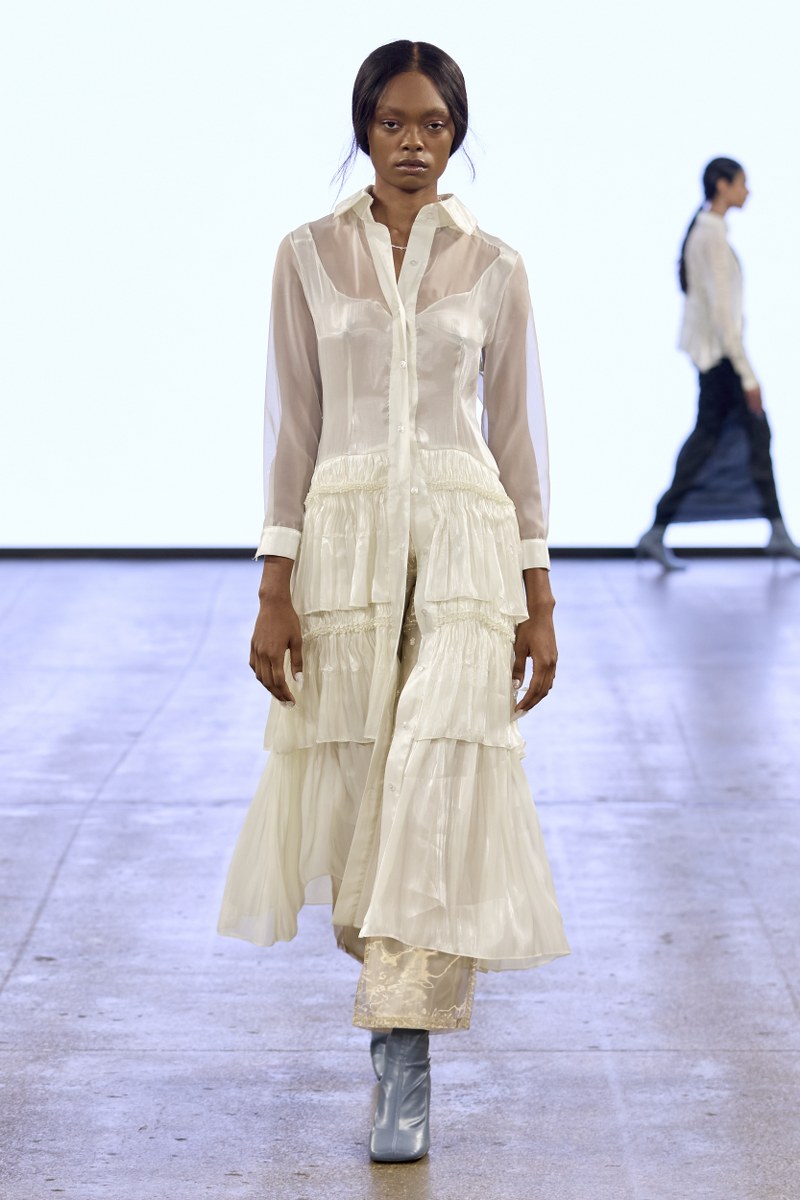


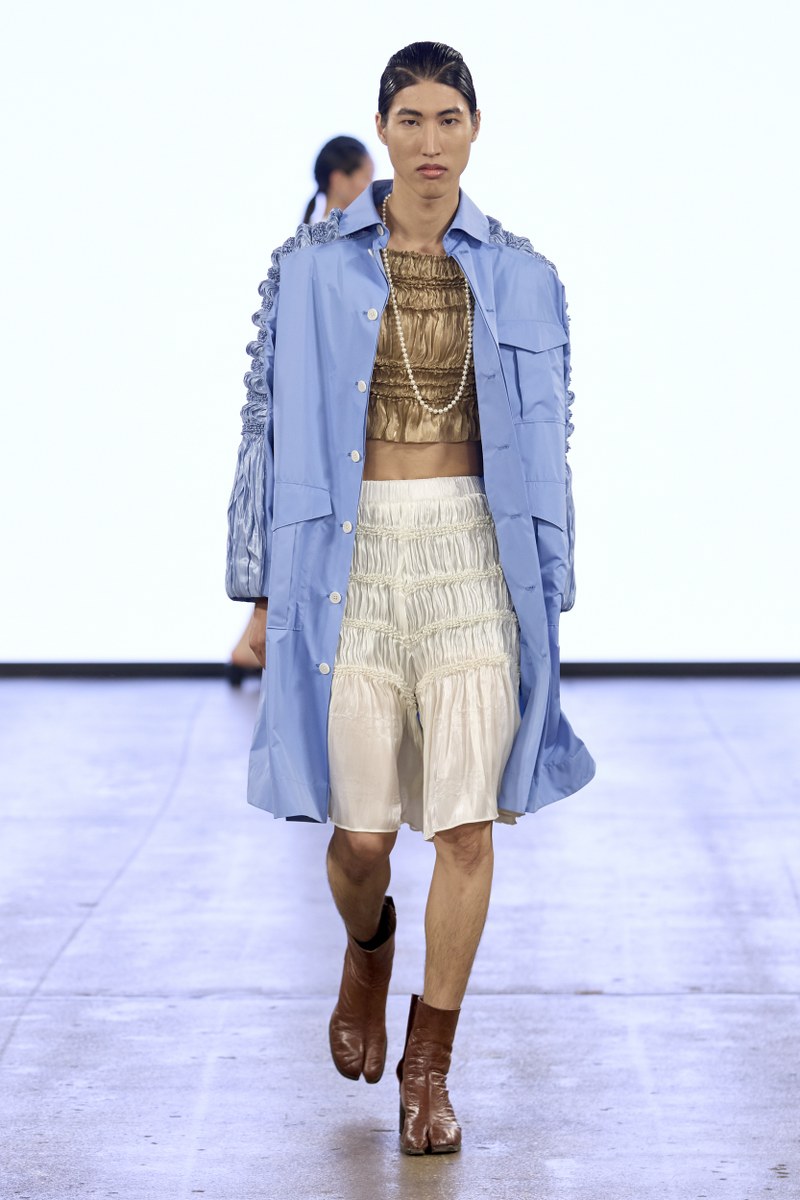
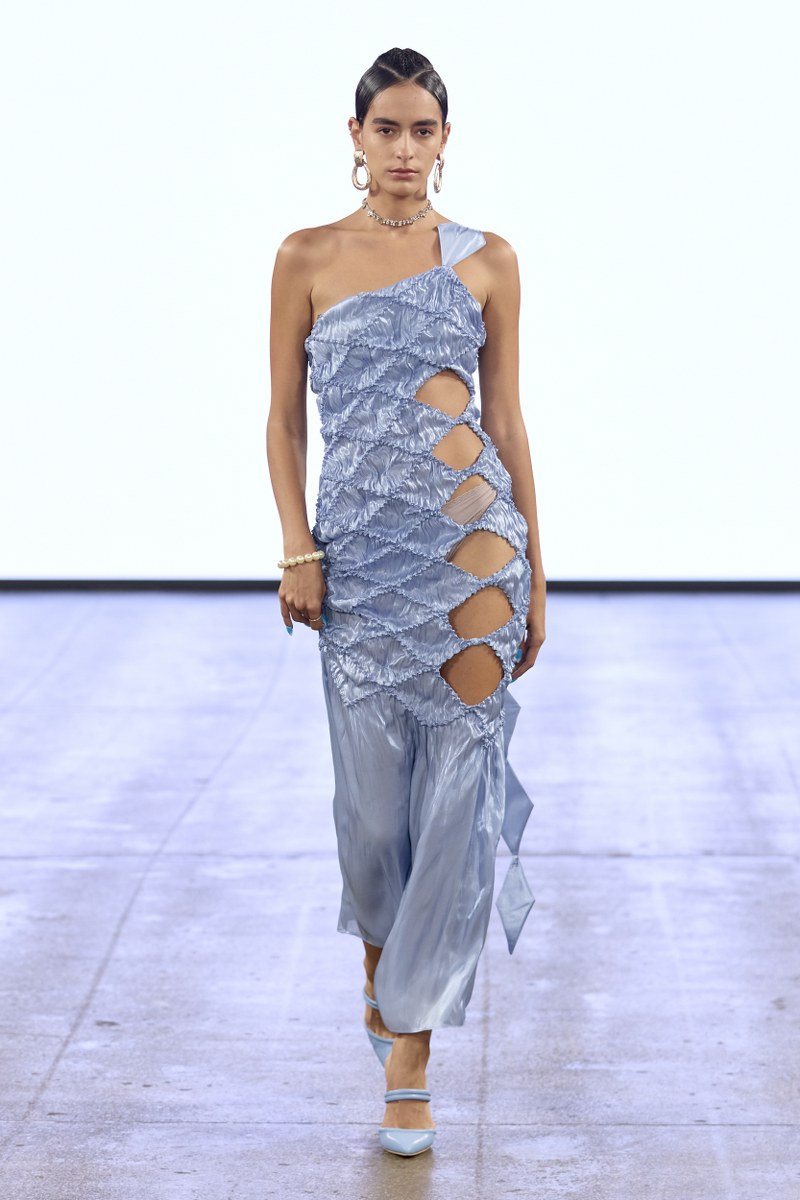
The commitment to preserving these ancient skills while re-imagining them for the contemporary fashion space is an integral part of Jun Nakamura’s vision. He told us, “We have been working with artisans who try to not only protect its heritage and its original design but also create something new. Since the launch of JU-NNA, we have been trying to create something new, Shibori patterns and/or fabrics, and each season, we have conversations on what and how it can be possible. It is an intense process, but I appreciate their enthusiasm and cooperation”. Explaining the Shibori technique in more detail, he said, “Shibori was originally invented to create patterns on fabrics by making small knots by thread by hand and by dyeing it. I focus on its 3D shape, which is a by-product of this process. As all this process is done by hand, it takes a long time to produce, especially when we try a new design. For example, it took six months to receive some small samples in the past. To create a kimono full of Shibori, it is not surprising that on some designs, artisans spend a whole year”.
That dedication to saving this venerable art form and the artisanal excellence required to craft its 21st-century iteration creates a potential dichotomy between creativity and production scalability. On this, the designer elucidated, “To create a new collection, I need to start early each season. In many cases, we think about a season after while designing the next collection. Some designs need a longer time to produce and can be created with only limited pieces. Therefore, we try to include some varieties in each collection”. Developing that theme further, Jun said, “After having some inspiration, I normally start thinking about how to use Shibori, its pattern, size, and on which fabric, which is an intense work, and it almost determines the collection. Every season, there are new findings on our Shibori, and so we have new options that we would like to try. There are also some designs that I wanted to try but have not yet. So far, I simply enjoy trying and finding new designs using this traditional technique and would like to keep exploring its potential”.
The holistic approach that Jun brings to his craft is demonstrated by the care and attention he brings to every facet of the JU-NNA aesthetic. An approach that was exemplified this season by his collaboration with Japanese nail team Soukashi. He told us, “I got to know the team in Japan on my periodical visits there and had a chance to discuss how we could develop a collection together with unique nail designs. It might be interesting if we collaborate with fine artists to create a collection in some way”.
Our conversation concluded with Jun telling us that he wants the person who wears his clothes to feel confident and enjoy the experience of wearing these handcrafted designs. These are sentiments not only shared by us and the adoring audience who packed his on-schedule LFW show but also by a worldwide clientele that has embraced the exquisite creations and ethical empathy which define the brand. Promising us he has several new ideas already born, we await these future instalments in the JU-NNA story with bated breath as this is undoubtedly a designer whose career is on a richly deserved upward trajectory.
Massive thanks to Jun for taking the time out from his hectic schedule to speak to us and to Harriet, Becca and all the team at Black PR for their help and support.
You can connect with the brand online here https://www.ju-nna.com/ and on IG https://www.instagram.com/ju_nna_/

